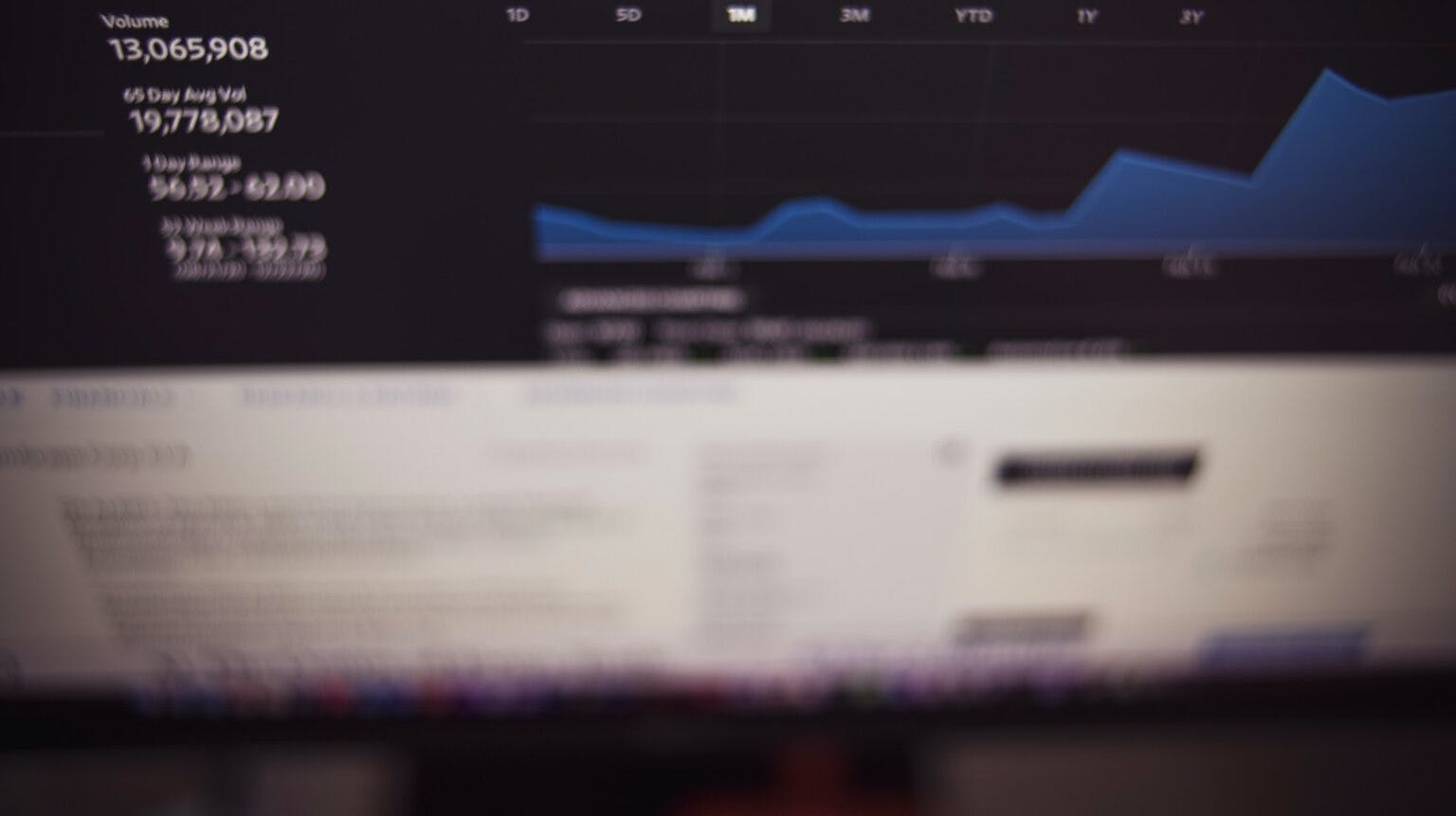Website Heat Maps and Utilizing them Effectively for Growth
Published January 18, 2022 by Bryan Miller
When you run and manage a website, you should know exactly how users act while visiting your site. It’s possible to measure how people use your site with website heat maps, which are graphic representations of site data where information is presented with color. If an area of your website has received ample amounts of traffic and interaction, it’s likely that the area will be displayed in vivid colors. On the other hand, an area of your website that doesn’t receive much traffic could be displayed in cooler green and blue colors.
Website heat maps are designed to accurately measure how much users interact with different elements of a site page. The different interactions that can be measured with this tool include movement, geographical location, attention, clicking, and scrolling. While services like Google Analytics will display static data like session length and bounce rate, heat maps provide more specific details that can help you identify areas of your website that should be improved.
As touched upon earlier, numeric values are displayed as colors on a heat map. How these colors are displayed depends on the type of heat map that you end up using. Just like Google Analytics, the data you obtain with this tool can help you make valuable improvements to your website. Over time, these improvements should result in more traffic, higher conversion rates, and a better user experience. This article takes a closer look at heat maps and how they can be used for growth.
3 Main Types of Heat Maps
There are three primary types of heat maps that you can use when assessing the performance of your website. The different types of heat maps are essentially designed to indicate what type of interaction is being measured. It’s possible to use click maps, scroll maps, and move maps.
A click map allows you to identify where users clicked once they reached your website via a landing page or homepage. With this type of heat map, colors will become denser and more vibrant in areas that have received the most clicks. If an ample amount of activity has occurred at an internal hyperlink that you’ve placed on your website, this means that people who browse your site are regularly clicking on the hyperlink in question.
You can also use these heat maps to identify aspects of your website that might not be working correctly. Let’s say that you’ve placed an interactive element onto a site page that users should be able to click on. If the area shows a low number of clicks, it’s possible that the element isn’t working as intended and needs to be fixed.
Scroll maps allow you to determine how far down a site page users scroll before navigating to another web page or leaving your website altogether. If there are lengthy pages on your website, there’s a good chance that only a small percentage of site visitors will scroll to the bottom of the page. As such, it’s highly recommended that you place the most important content at the top of the page.
The third type of heat map is a move map, which is also referred to as a mouse-tracking heat map. These maps show how users moved their mouse on a landing page. The only issue with this type of heat map is that the placement of a cursor doesn’t always indicate that the user looked at that area for a set amount of time. Even though the cursor was positioned over the page headline for six seconds, the user likely wasn’t reading the headline for that long.
However, move maps can indicate where on the page users are looking. If a mouse is rarely positioned over an important area of a page on your website, it’s possible that the area is poorly designed or doesn’t provide the user with the type of information they’re looking for.
Who Benefits From Using a Heat Map?

There are four types of professionals that benefit from using a heat map, which include UX designers, data analysts, product owners, and marketing professionals. Since heat maps allow you to identify how users interact with your website, nearly every member of your team can benefit from heat maps in some way. All four of the aforementioned professionals can measure why users:
- Become distracted by non-essential elements
- Don’t convert into return customers
- Don’t reach calls-to-action or important content
UX Designers and Heat Maps
When it comes to a website, UX designers are tasked with making sure that the site itself is usable, accessible, and enjoyable. UX designers are regularly hired to implement a strong user experience throughout the entire website. A UX designer can use a heat map to identify strange behavior that involves users clicking on an element of the page that isn’t supposed to be clickable. This indicates that a website isn’t providing users with a fantastic experience. In this situation, they might choose to leave the website for a competitor’s site.
UX designers can also use heat maps to test new layouts or website designs. Once elements of a website have been changed, the UX designer can perform A/B testing to measure site performance with the old page and the new page. Consider using heat maps for usability testing as well. When a UX designer takes advantage of a heat map, they can use the data that’s found on the map to recommend UX improvements that could be made.
Data Analysts and Heat Maps
Data analysts are professionals who gather data and interpret what this data means. Analysis is typically performed to solve a specific problem. Heat maps allow data analysts to more effectively balance qualitative data and quantitative data. Even though other site performance tools will only tell you how many times a button on a web page has been clicked, heat maps show data analysts what occurs before, after, and between clicks. With this information in hand, data analysts can transform analysis into actionable business recommendations and insights.
When working as a data analyst, heat maps allow you to identify any irrelevant data, which can then be ignored as you assess performance. Heat maps are also able to display relatively complex data since these maps are based somewhat on quantitative statistics. If you need to make recommendations to a boss or team leader, you can use a heat map to support your recommendations.
Product Owners and Heat Maps
A product owner is a professional who is oftentimes responsible for making sure that a project reaches a desired outcome. Product owners are able to use heat maps for many tasks. For instance, heat maps can be used by product owners to investigate and eventually eliminate assumptions. The decision to eliminate certain assumptions can be based entirely on data as opposed to guesswork.
Prioritizing tasks is also made easier with heat maps. If you use historical heat maps, you can identify changes that have taken place gradually and are therefore more difficult to notice without heat maps. If these changes are potentially harmful, the information you glean from the heat maps can be used to correct the issue.
Marketing Professionals and Heat Maps
A marketing professional is someone who uses a wide array of marketing methods and techniques to draw potential customers to the business that they work for. There are many different types of marketing that a marketing professional can work with, which include everything from social media marketing to PPC ads.
Marketing professionals or web design agencies can use heat maps to make sure that their marketing spend is actually helping to convert site visitors into the return and paying customers. Heat maps are able to help you pinpoint where actionable changes should occur on a website. For instance, you can use the data that’s given to you by a heat map to determine where calls-to-action should be positioned on your website.
The goal of implementing calls-to-action is to improve your click-through rate. Since it can be expensive to perform marketing that will bring new traffic to your website, it’s highly recommended that you take measures that will allow you to make the traffic that reaches your website more valuable.
The overall effectiveness of your ad placements can also be measured with heat maps. If users aren’t scrolling down far enough to view the entirety of your ad, it’s likely that the ad isn’t performing like you want it to. You can use this information to place the ad in a better position that will get it more views from your customers and other site visitors.
The Importance of a Heat Map

Heat maps are important because of all of the metrics they allow you to measure. Along with clicks, movement, and scrolling, you can also measure the time-before-click, clicking visitors, hover time, and hover-to-click rate. These measurements provide you with data that can be used to make substantial improvements to the layout, design, and content of your website.
As mentioned earlier, heat maps are beneficial to UX designers in several ways. If you work as a UX designer, you can use heat maps to identify areas of your website that aren’t as popular as you want them to be. A heat map can show you if users are clicking on the checkout button that leads to the purchase of a product. If there are hardly any clicks in this area, it’s possible that the checkout button is poorly designed or has been positioned in an area that’s cluttered and draws attention away from the button.
You can use the information you glean from heat maps to make clear improvements to the UX design of your website. You will also be able to ascertain the underlying trends of how your website has been performing. When used properly, website heat maps should give you the tools you need to grow your business and provide a more engaging website to your customers.
Bryan Miller
Bryt Designs
Bryan Miller is an entrepreneur and web tech enthusiast specializing in web design, development and digital marketing. Bryan is a recent graduate of the MBA program at the University of California, Irvine and continues to pursue tools and technologies to find success for clients across a varieties of industries.
Subscribe to our newsletter
STAY UP TO DATE WEB DESIGN, DEV, & SEARCH MARKETING INSIGHTS & TIPS
Suggested Content
The 3 Essential Website Performance Monitoring Tools in 2024
Published 2024-05-13T11:16:44 by Bryan Miller
10 Powerful Home Services Marketing Strategies to Attract New Customers
Published 2023-07-17T06:00:00 by Bryan Miller
Mastering CRO Marketing: The Ultimate Guide to Boosting Conversions and Winning Customers
Published 2023-07-03T06:00:17 by Bryan Miller



